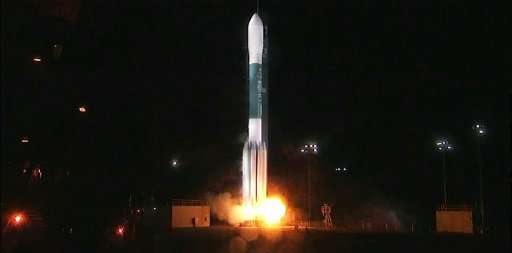NASA launches next-generation weather satellite

NASA on Saturday launched a next-generation satellite into space designed to monitor weather around the world and help improve forecasts.
The satellite, called the Joint Polar Satellite System-1 (JPSS-1), is a joint venture between the US space agency and the National Oceanic and Atmospheric Administration (NOAA), which provides weather reports and forecasts.
The satellite was launched aboard a United Launch Alliance Delta II rocket as scheduled at 1:47 am (0947 GMT) from Vandenberg Air Force Base in California.
It will orbit the Earth 14 times each day from one pole to the other at 512 miles (824 kilometers) above the planet, "providing scientists full global coverage twice a day," NASA said.
The satellite "is the first in NOAA's series of four, next-generation operational environmental satellites representing major advancements in observations used for severe weather prediction and environmental monitoring," it said.
JPSS-1 "carries a suite of advanced instruments designed to take global measurements of atmospheric, land and sea conditions, from sea surface temperatures, volcanic ash, hurricane intensity and many more."
Four smaller satellites called CubeSats, part of NASA's educational nano-satellite program, are to be released on the same mission.
The CubeSats belong to four US universities and will be set in orbit after the weather satellite has been deployed, NASA said.
Two previous launch attempts had been cancelled, once due to high winds and another due to technical problems.
© 2017 AFP




















